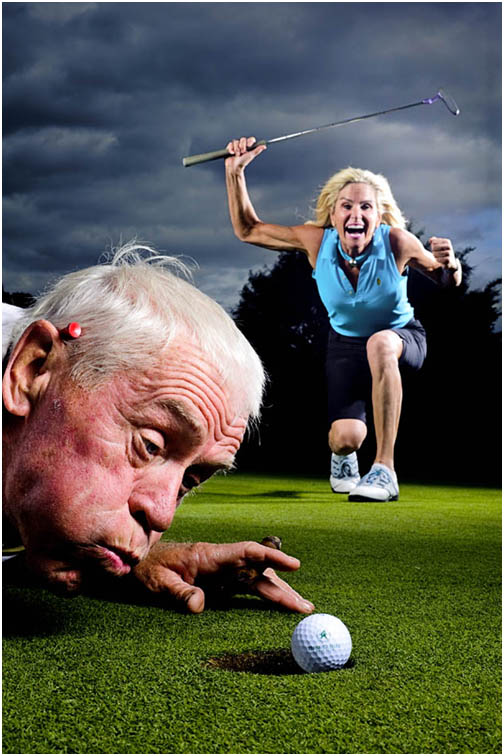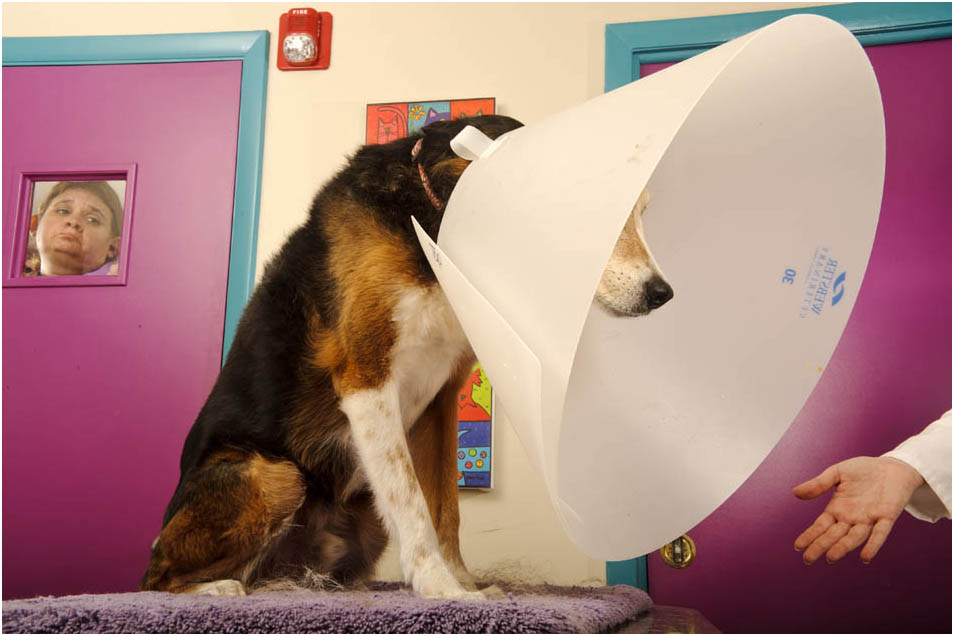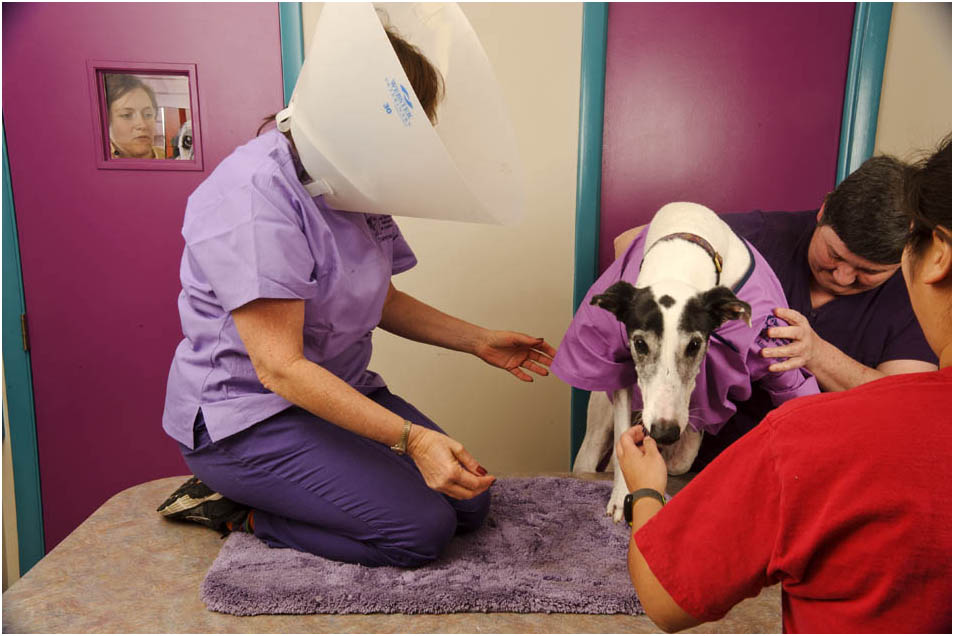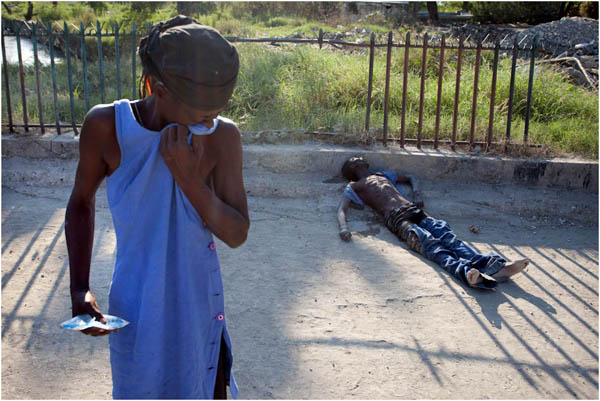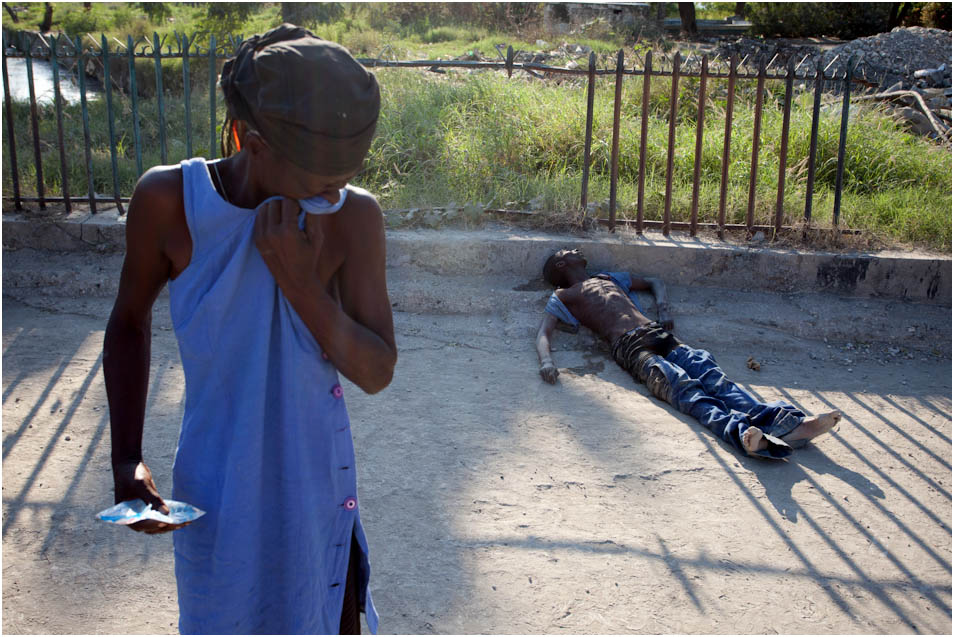
TID:
Thanks for taking the time to share your thoughts
on this difficult image. Please tell us a little bit
about your background first.
BEN:
I'm working in Haiti these days. I moved to Haiti in 2008, and I
worked as a staff photographer for an NGO for two years before
going freelance. I had been freelancing for a few months when
I made this picture.
Cholera was introduced to Haiti by the UN soldiers almost exactly
a year ago (and 6,500 people have died as a result). The latrines
on one of the bases were draining straight into a river. A few weeks
before I shot this particular image, I photographed the funeral of
one of the very first deaths by cholera on assignment for The Times.
As I watched – and photographed - the epidemic's spread across the
country, it seemed to me that the official numbers from the Haitian
government were too low. The immediate response was such that I
didn't get the sense people were really grasping the gravity of the
situation.
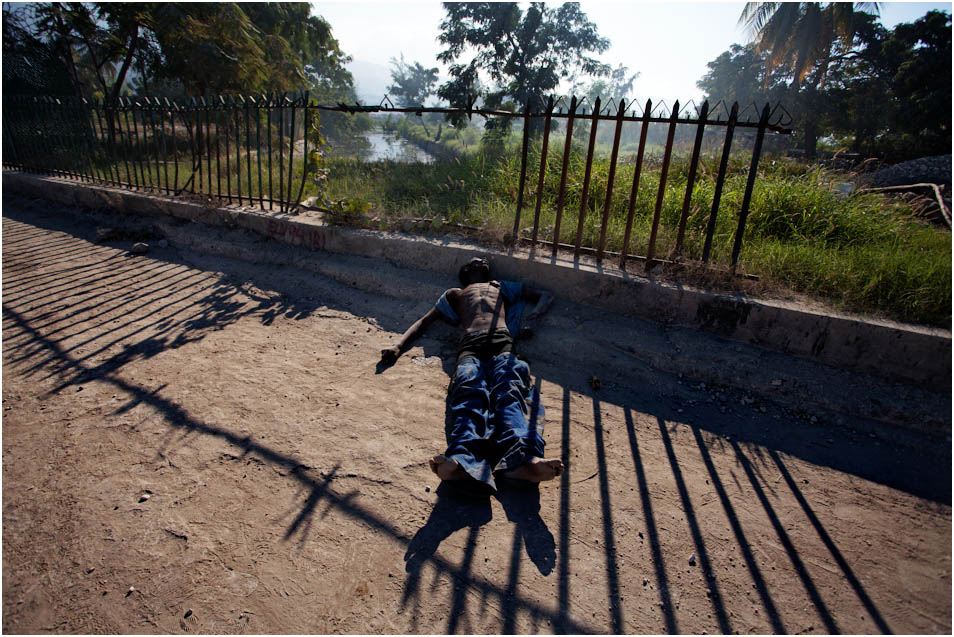
TID:
Let's talk about covering cholera in Haiti. What was going
on in your mind before making this image?
BEN:
I don't like news stories that start with “Haiti is the poorest country
in the Western hemisphere.” While covering cholera, I didn't want to
be doing just another Haiti-is-so-poor-and-screwed kind of story.
But cholera was (and still is) very serious. Although I avoid the doom
and gloom stories as much as possible, I felt like this was an important
one to follow. People were literally dying within hours of contracting
the disease, and I felt a need to try to convey the real sense of urgency
that would push donors, NGOs, and the government to take things
more seriously.
Cholera is so easy to treat. It's senseless for so many people to have
died (and still be dying) with all of the resources that are actually
available in this country. Many victims have died simply because they
or their families didn't know that they should go immediately to a
treatment center upon exhibiting symptoms.
After the first month or so, when there was no shortage of coverage,
and, rightly, some clinics stopped allowing photographers inside.
Cholera pictures were available for anyone who needed them, and I
stopped covering it.
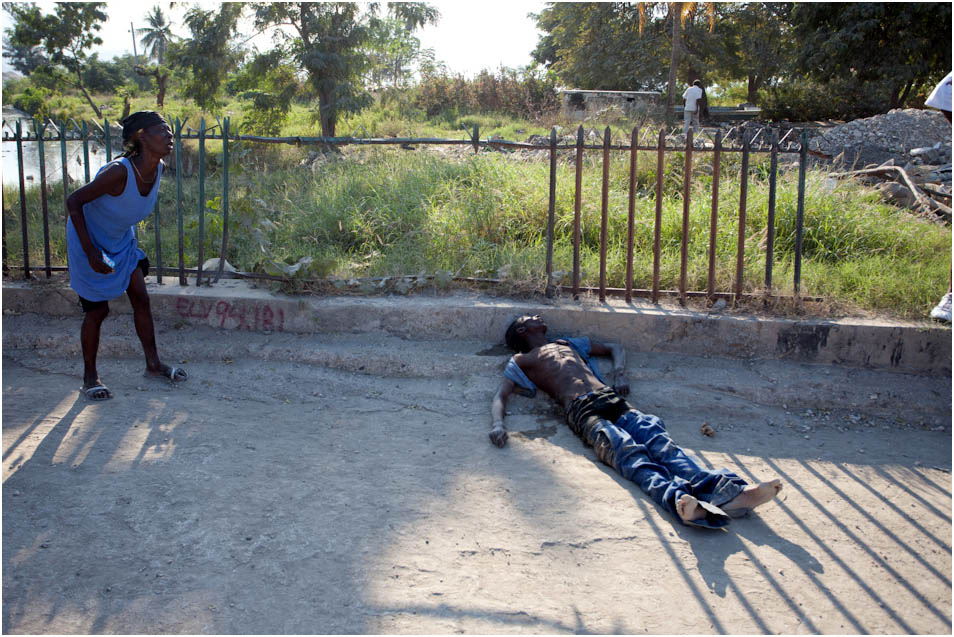
TID:
Let's talk about the day you made the image.
BEN:
The first cases of cholera had just been reported in Port-Au-Prince.
With the unsanitary conditions in camps and lack of potable water
accessible in shantytowns, I was terrified about what that meant for
the city. Another journalist and I went out on motorcycle to see
what situation was like. I expected to see people dropping dead in
the streets and, literally, that's what we found. First, we came across
one victim dead on a sidewalk. Fifteen or twenty minutes down the
road we came across a young man who was still alive, but barely. His
mother was trying to take him to a cholera treatment center and he
had collapsed a mere few hundred feet from the entrance. He was on
the side of a fairly major road that runs across along the bay of Port-
Au-Prince. I shot a couple frames and then my friend and I tried to get
the staff at the treatment center to bring over a stretcher. We thought
they were on their way with the stretcher, so we went back to him and
kept shooting. He died within a few minutes.
TID:
As you started making the image, what was going on
in your mind?
BEN:
I was mostly thinking, “Where the hell are the people with the stretcher?”
It didn't seem like dragging him to the clinic was a good idea. Honestly,
I was also thinking about how to compose pictures to do justice to the
situation - there was the broken fence behind the guy casting really nice
shadows, which made the scene more ominous looking. There was also a
canal in the background that I felt alluded to the Styx, “the river of hate”
in Greek mythology that separates the world of the living from the world
of the dead. I wasn't able to include it in the image because it was too far
away. Coming across this type of situation is rare – yes, even in Haiti - so
I didn't want to screw it up and or miss any important details.

TID:
What were your concerns as you made the image,
and what was going on in the outside area of the
image?
BEN:
Well I was afraid that he was going to die and I'm always uncomfortable
shooting pictures of this kind of thing. I don't want to be exploiting suffering
just to make strong pictures if they're not also important pictures. I only
had a 20mm lens with me that day, so I was physically pretty close to him
and I didn't want to upset either him or his mother with my presence.
Outside of the image, a few young guys were standing nearby, watching.
They were scared to get too close to someone with cholera. Meanwhile,
the mom was frantic, wailing and walking around in circles. As he died
she was trying to give him water, as if in denial that she was losing her son.

TID:
What impact did this have on you emotionally?
BEN:
Seeing people die from cholera is particularly tragic because it's so
preventable. I was angry at the injustice of it, especially since the cholera
deaths are really a direct result of systemic issues of greed and corruption.
It's criminal that the water and sanitation infrastructure isn't better here.
It could be, but it's not. It's also criminal that the UN hasn't taken
responsibility for introducing cholera to Haiti. It still makes me angry.
My sister was dying of cancer while I was shooting this, so I was processing
that too. Anticipating her death made me more emotionally connected to the
people I saw dying of cholera. When the young man died, I was very conscious
of the process of his death. He was half awake, a minute later unresponsive
and then he stopped breathing and I was wondering the whole time if that's
what it would be like when Martha died. I was in Haiti for the earthquake in
January of the same year and though I saw hundreds of maimed and dead
bodies, I had still never witnessed anyone passing from life to death. 2010
was a heavy year for me and I'll be affected for the rest of my life by the
succession of traumatic events, but I wouldn't say this one man dying had a
profound effect on me in and of itself. It's more the accumulation of loss and
witnessing suffering.
Ten minutes after shooting this image, I came across a ten-year-old boy dead
in the road. His mother hadn't understood how quickly cholera could kill him,
hadn't been able to take him to a clinic and now that he was dead she didn't
have money to do anything with the body, so she put him in the road for the
government body collectors to find.
TID:
You said, "It's more the accumulation of loss and witnessing
suffering" that has had an effect on you. What effect has it had?
BEN:
I think I have some PTSD. I've always been easy going and in the past
two years, I have become less patient, more easily irritable, more
emotional, and at the same time, less affected by shocking things that
maybe should have an effect on me. I think all this is pretty normal
given my experiences. I'm still pretty laid back so the changes in my
personality are somewhat relative but are still unnerving for me.
TID:
What did you learn from making this image?
BEN:
What makes this image successful is the focus on the mother and the fact
that I was able to capture her grief. I don't think many of us can relate to
dead bodies in an emotional way, but we can all relate to grief - and I would
guess that that's certainly the most true for mothers who see this picture. I
only understand this now as I look back at the pictures in the process of
grieving the loss of my sister. At the time, I was just trying to capture everything
that was happening.
TID:
What surprised you about making this image?
BEN:
I was surprised when all the elements came together. I was trying not to
intrude too much on this woman's personal space. To frame the image,
I was able to position myself so that she walked back and forth in front of me
and I didn't have to follow her with my camera in her face. I was also a bit
surprised that nobody minded that I was shooting pictures of this situation.
I think that that was only because the people around had seen me try to
engage with the dying man and try to get help for him.
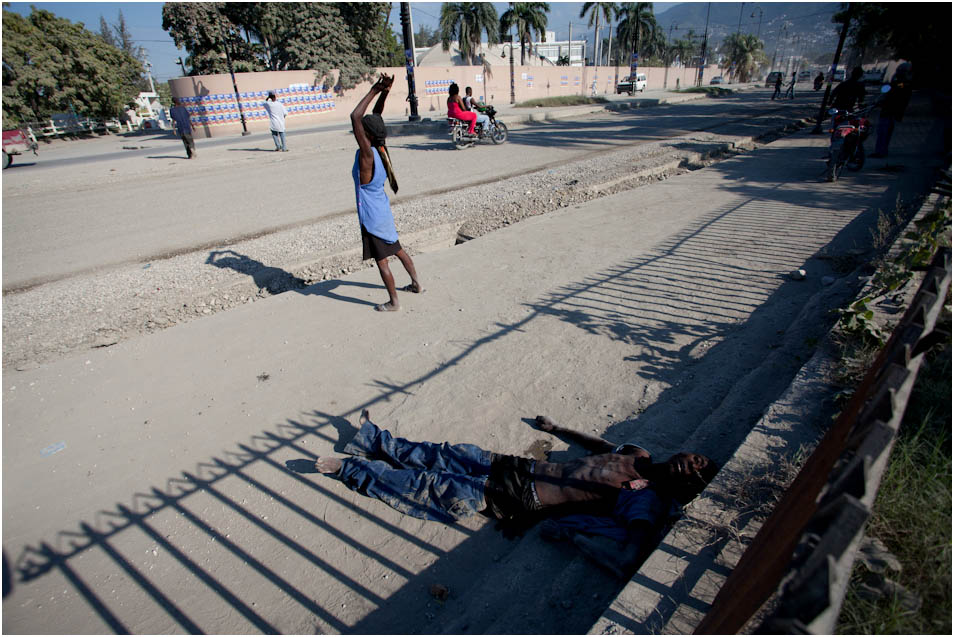
TID:
How has working in Haiti changed you as a photographer?
BEN:
I'm still learning all the time and my work is improving. I'm learning
a lot from other photographers working in Haiti, both on shooting
stories and how the business side of freelancing works. I'm slowly
becoming more successful freelancing which is a good feeling. Since
I've been here for three and a half years and have really developed as a
photographer at the same time, I'm not sure what I can directly
attribute to Haiti so much as just working full-time and being
involved in a dynamic community of photographers.
TID:
What do you wish people knew about covering
Haiti that you think most people don't know?
BEN:
If you haven't worked in Haiti, you should depend on a good fixer. In Haiti,
everything is based on relationships and you need to be able to engage with
your subject and establish a certain level of trust. This is true everywhere,
but decades of external intervention and power imbalance make Haitians feel
particularly exploited by foreign photographers. Without good relationships,
shooting in high-stress situations can also be dangerous. Several photographers
I know almost got killed covering cholera. Because UN troops introduced the
cholera, there were rumors that foreigners were spreading it on purpose and
in several instances, photographers following the trucks picking up the bodies
of victims got attacked. Their fixers were able to negotiate on their behalf.
TID:
In conclusion, what advice do you have for people
covering these situations?
BEN:
Try to be a human before being a photographer - if you have the chance to
save somebody's life, do it. Walking away from a malnourished child on the
edge of death or a cholera victim that needs transport stays with you.
Don McCullin says it best:
I have been manipulated, and I have in turn manipulated others, by recording
their response to suffering and misery. So there is guilt in every direction:
guilt because I don't practice religion, guilt because I was able to walk away,
while this man was dying of starvation or being murdered by another man
with a gun. And I am tired of guilt, tired of saying to myself: 'I didn't kill that
man on that photograph, I didn't starve that child.' That's why I want to
photograph landscapes and flowers. I am sentencing myself to peace.
I sometimes wonder how long it will be
before I'll need to 'sentence myself to peace.'
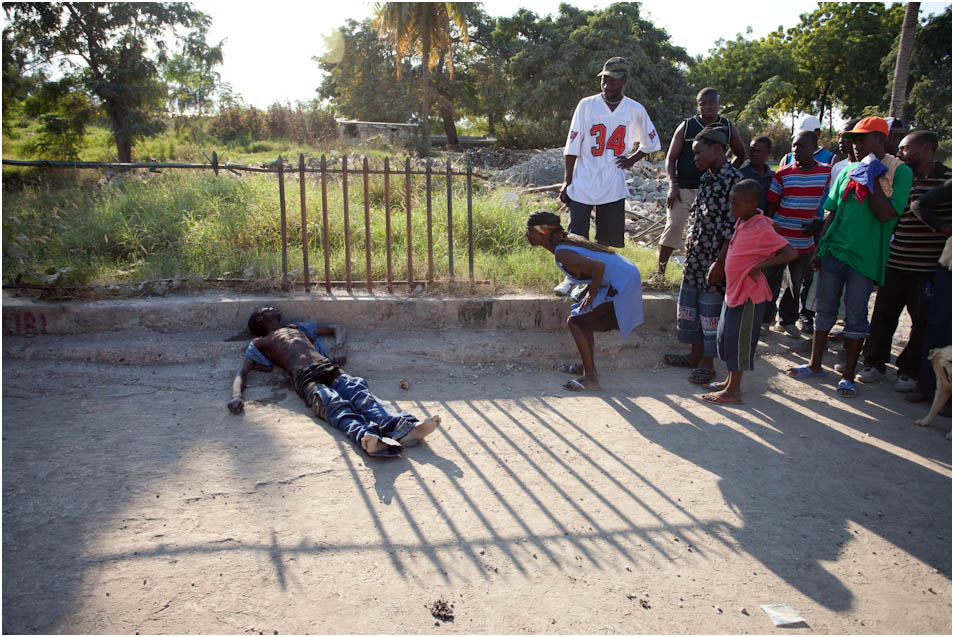
+++++
Ben Depp has worked as a photojournalist since 2005 and hopes to make a living taking pictures for many years to come. He has entered several photo contests but never won. Recent clients include Newsweek, The New York Times, TIME, L'Équipe and The Times. Ben still lives in Haiti with his wife and cat.
http://www.bendepp.com/
+++++
Next week we'll explore this telling image of the Texas drought
by Austin American-Statesman photographer Jay Janner.
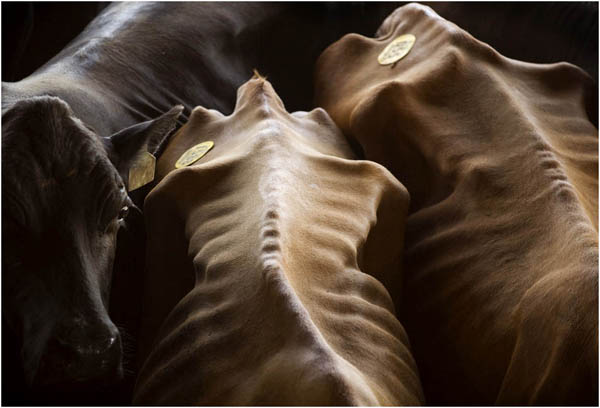
As always, if you have a suggestion of someone, or an image you
want to know more about, contact Ross Taylor or Logan Mock-Bunting:
ross@imagedeconstructed.com
logan@imagedeconstructed.com
For FAQ about the blog go to:
http://www.imagedeconstructed.com/

